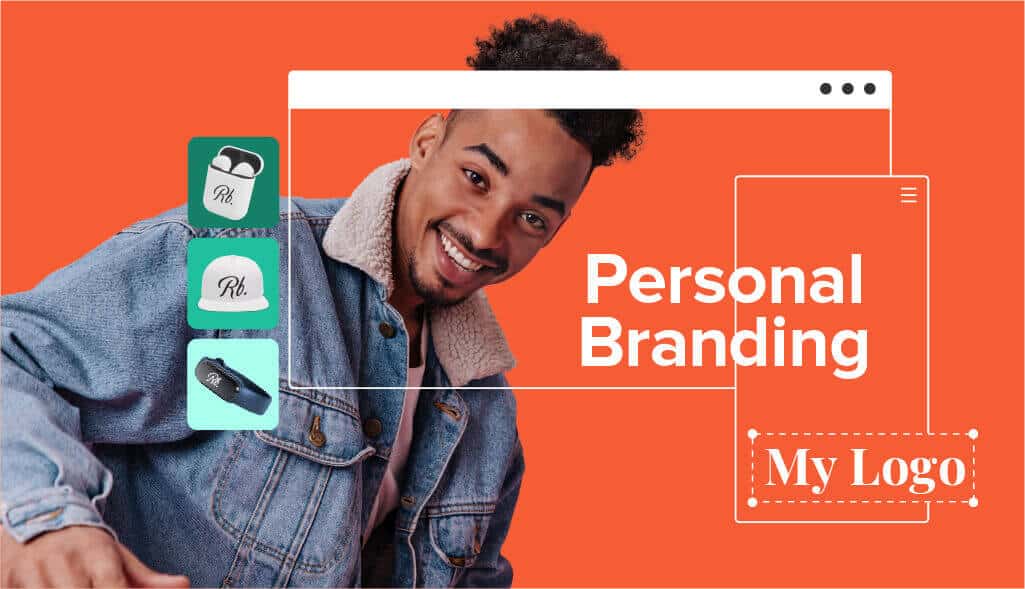
Personal branding isn’t a new concept. Corporate brands have been using sports stars and celebrities for years to give their organizations a face. LeBron James has a lifelong contract with Nike; Charlize Theron, and most recently, Natalie Portman provide Christion Dior with theirs.
But they have something you don’t — fame — so what’s changed?
Everything!
Personal branding has now become, well, more personal. Now, people like you are using innovative tools to create brands that attract considerable followings to their social media profiles and websites.
It begs the question, though: How do you stand out?
What you have to say is essential, but it’s how you say it that really matters. You see, people don’t relate to corporations; they connect to individuals, and the key to your success is knowing how to create a winning personality and where to put your energy.
With that in mind, let’s start from the very beginning and tell you what you need to know to create your own brand.
Think about the George Foreman grill made by Spectrum Brands. Have you ever heard anyone call it a Spectrum Brand grill?
George is the personal brand.
OK, it’s at a corporate level, but it’s an excellent example of giving a brand a personality—one that differentiates it from the competition and connects to its target audience on a human level. After all, it’s just a grill, right?
But this one is different; it has George’s friendly smile and his good-guy image associated with it. That’s how it stands out.
And it’s how you stand out, too.
You have something corporations don’t—your personality—and it’s as unique as your DNA. Think about an influencer or a blogger you follow; what is it that attracts you? What makes you follow them rather than a competitor?
Chances are, it’s their personality.
Your personal branding is a combination of your skills, passion, and experience; it’s what you stand for and believe. And if you show it authentically, you’ll connect it to your business in ways no competitor or corporate brand can compete with.
Corporations create brands to sell products or services using marketing strategies and campaigns designed to shape the customer’s perception. And, they invest vast sums of money to create a brand personality, to ensure it connects with their target audience.
Being human, we don’t connect emotionally with a bottle of Coca-Cola on the same level as we do with a famous wine blogger like Gary Vaynerchuk. It’s why these companies create personas around their products.
On the other hand, with personal branding, you are the persona, or the image you project to the world.
It doesn’t mean you show every aspect of your personality, unless you aspire to be a reality TV star! Instead, you must carefully craft what you offer while balancing authenticity and perception, ensuring you never lose your true essence.
It’s how Gary Vaynerchuk transformed his father’s liquor store into a leading wine e-commerce platform, resulting in $60 million in sales within 5 years.
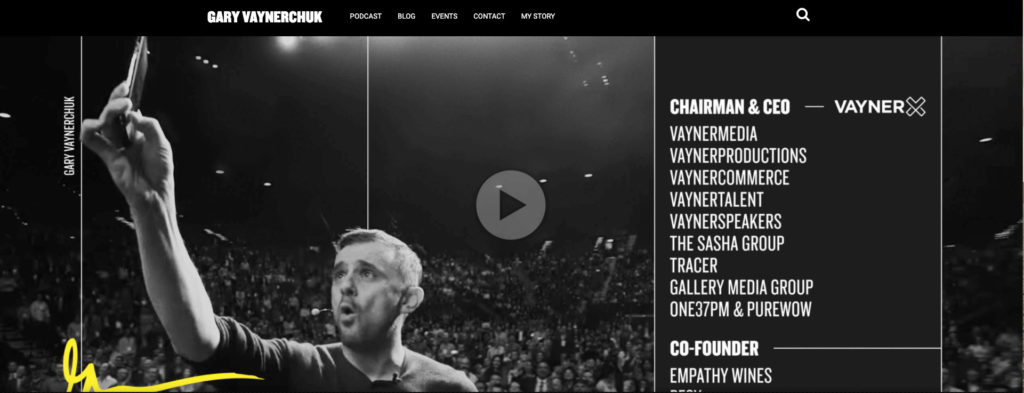
Remember, your personal branding is you and what you stand for, and while you must tune it to suit your target audience’s interest, it’s real, not fake. In other words, you are your business; you are the brand.
Building a personal brand creates strong consumer loyalty—making it easier to build an audience and community you can promote your products and services to, now and in the future.
Take Jess @thewonderingdreamer as an example:
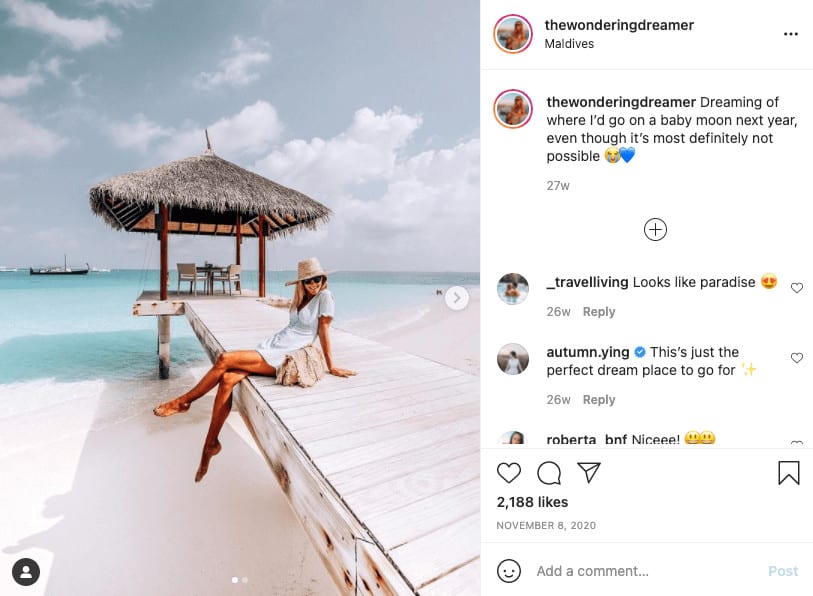
In 2016, Jess turned her love for traveling into a full-time business, posting beautiful images and dreamy content about the exotic locations she visited to fund her globetrotting adventures. Her original audience was probably of a similar demographic, drawn to her blog because they dreamt of living her lifestyle.
Fast forward to 2021, she has 164k followers on Instagram, and she’s a mom.
Now when you visit her website, The Wondering Dreamer, it’s filled with helpful tips for creating the perfect nursery, and she’s promoting products ranging from furniture to baby clothes. Jess is a perfect example of why personal branding is so important. She’s used hers to shine in her niche, attract like-minded people, connect emotionally and evolve with her target audience.
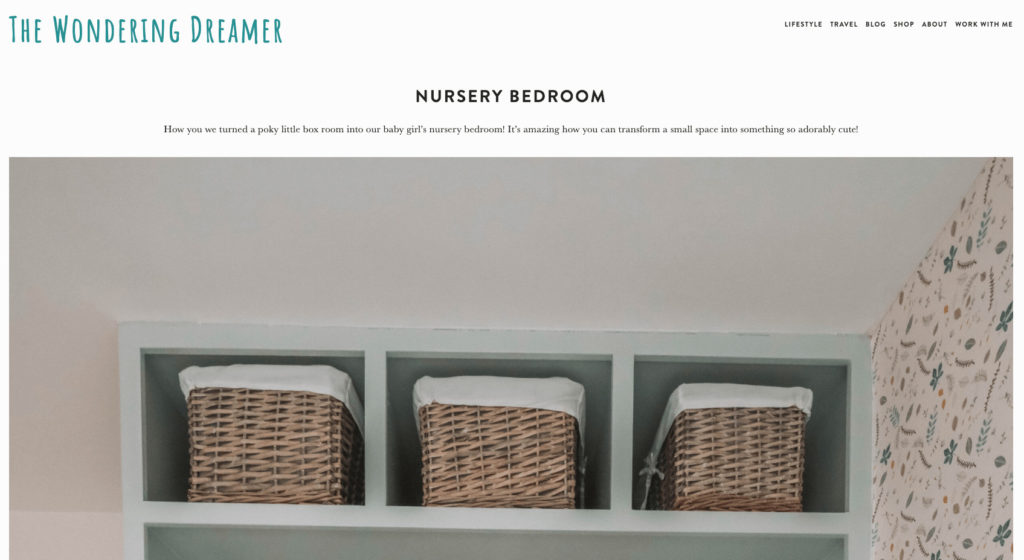
So, why is it important?
Your brand is your reputation, and most importantly, you’re in control of it. And you’ll always be able to make money if your brand is strong.
Jess says it best: “Create something unique, be individual, and above all, be real”!
OK, we’ve covered the what, how, and why. Now, let’s dive in and get you branded.
And it all starts with you and your niche.
A niche is a segment of a primary market. For example, pet products are a primary market, while “handmade, semiprecious, stone-encrusted leather training collars for dogs” are a niche within the pet market (huge demand, by the way).
An inspiring example of how to create your niche:
Diana @dianamiaus is an Instagram blogger with 128k followers. She, too, writes about travel. Travel is the primary market, but Diana takes pictures of stunning colorful doors that match her equally gorgeous outfits to stand out in her market.
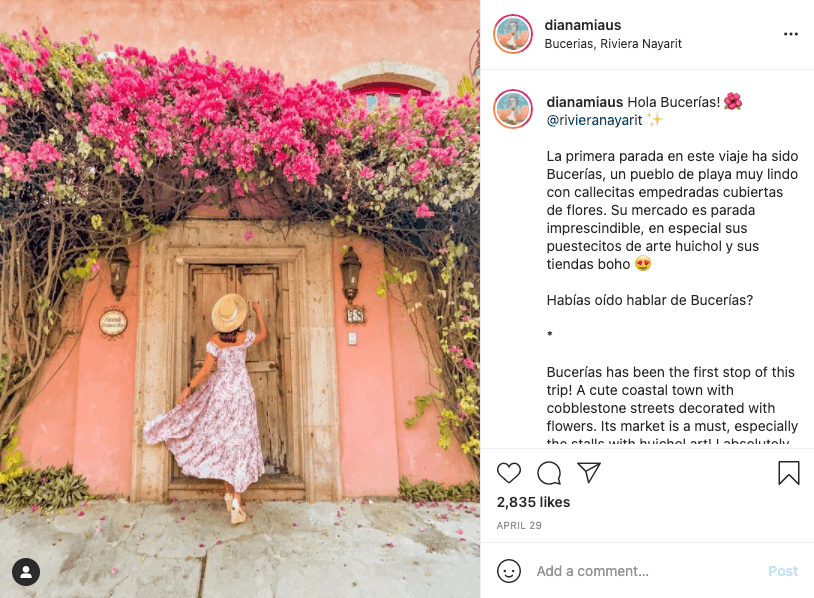
Diana cleverly created a sub-niche (fashion and doors of the world) within a niche (travel and photography). And, her picture-perfect pastel-colored photos have an incredibly high engagement rate of 7.4%.
And, her door niche is so popular it now has its own Instagram account!
Finding a popular niche is essential for your brand. After all, it’s hard work creating one, so you want to ensure the niche you’re entering is worth it, right? As with Diana’s example, your niche can be anything, as long as you’re providing a truly unique view on the subject and the public are interested.
Several ways to find yours:
Even the most obscure niches have competition, and there’s only room for one at the top. To establish yourself as the go-to expert, you must base your content on your target audience’s pain points. Pain points can range from challenges they are facing to an interest in a subject.
Imagine you’ve chosen the interior design niche and have entered a sub-niche directed at families living in small spaces.
Their pain points could look like this:
Cramped living accommodation + no space + no privacy = stress and going a little crazy.
You’re not solving their storage problem; stress is their pain point. To succeed in building your personal branding, you have to show your target audience you understand their pain points, care about them, and have the personality to prove it.
On that note, let’s talk about your personality, style, and point of view next:
Think of the following brands: Virgin, Tesla, Apple.
All are corporate world leaders in their market places, but did you think of Richard Branson, Elon Musk, and Steve Jobs?
If so, it’s because they used their personalities to give their brands a face and a persona their audience could relate to. It’s a neat trick for a corporation.
And if you want to stand out from your competitors, you must learn how to do it.
After all, you’re not alone in your marketplace (if you are, you’ve probably chosen the wrong niche), and it’s your unique point of view and tone of voice that gives your brand the personality it needs.
But your brand’s personality is much like your own; it takes time to develop, evolve, and adapt to suit its audience. This is good because it gives you the freedom to experiment and find what works best for you.
Remember, your unique personality traits are what attracts people; they’re your X factor. And while you can fine-tune your brand personality, you can’t change the station.
Using your personality to convey your message and attract people is, of course, crucially important in branding, but so is the message you’re sending.
And with so much available content, audiences have fine-tuned the art of scanning until they find brands they relate to. You connect with them by defining your message so it speaks your audience’s language.
In other words, you define your unique value proposition.
Your UVP is a short, simple statement, clearly defining what you do and how it benefits the reader.
Each statement tells you what they offer. But of course, your message needs more than a catchy UVP.
Take someone like Noah Kagan, owner of Sumo Group.
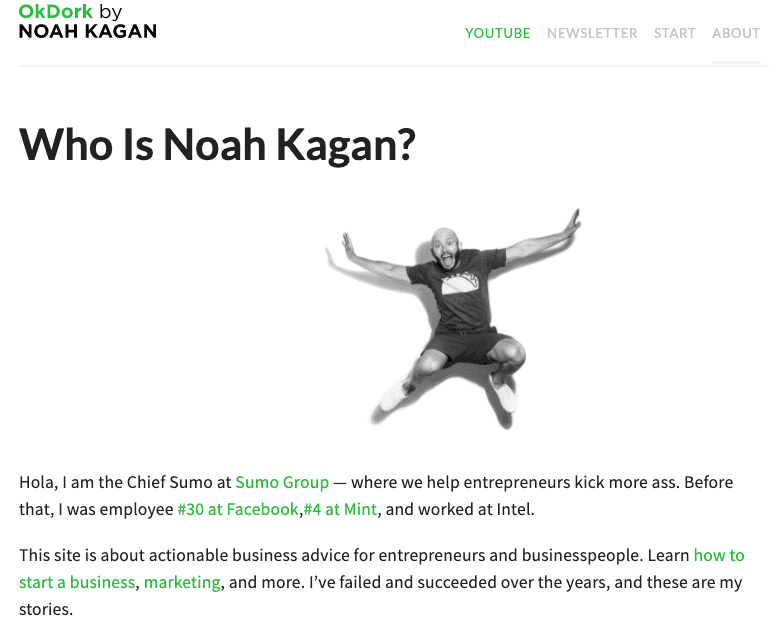
He’s in the business market. As his website says, he “provides actionable business advice for entrepreneurs and business people.” Business and actionable steps aren’t usually the cause of much excitement, that is, until you watch Noah’s take on the subject.
Noah delivers his advice in such a down-to-earth way that anyone can understand it. And his enthusiasm for what could be a dreary subject is infectious, leaving viewers pumped, believing in themselves, and ready to take on the world.
And he defines it in his message.
Did you notice the common denominator linking all the influencers and bloggers mentioned thus far?
They’ve all invested in their visuals.
Their websites and blogs are impeccably designed, with a simple UX, beautiful photographs, high-quality infographics, and video. You’ll also see consistency running throughout, with the use of colors (Neil Patel using orange), as well as fonts and, of course, eye-catching logos.
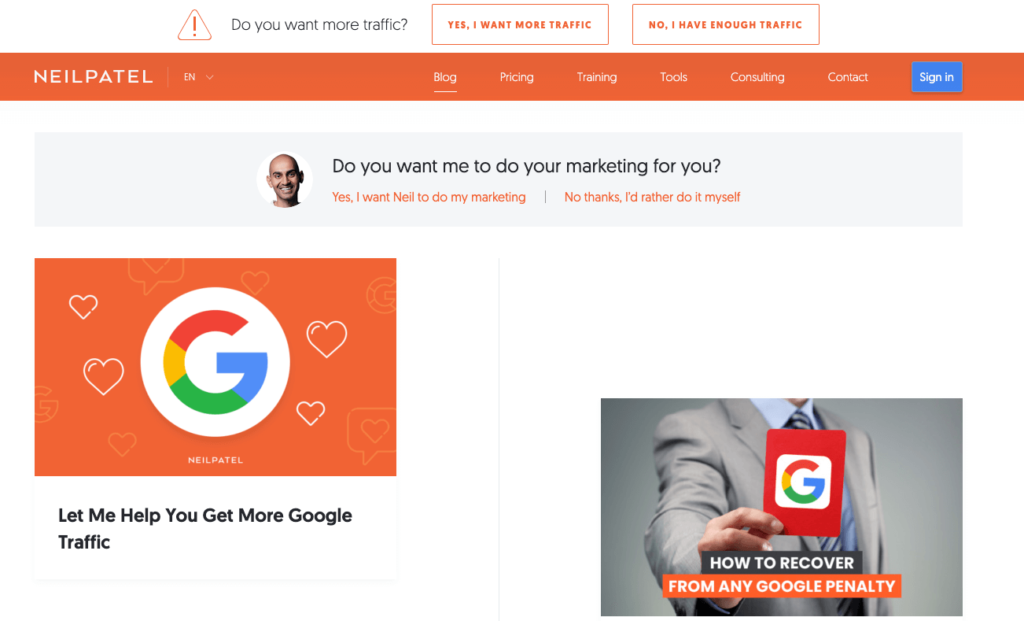
Why do they pay close attention to detail?
Because good design makes a great first impression. According to one study, “94% of the time, most people’s first impression of a brand is based on the design”. And as you never get a second chance to make a first impression, you must ensure your visuals are the very best available.
If you hang around designers much, you’ll often hear them mention the word “consistency”.
It’s because the more consistent you are with your visual designs, the easier you’ll be to recognize. And as the average person has to see a brand 6 times before they remember it, the more often you use the same logo, colors, fonts, and visuals, the quicker they’ll recognize you as their go-to authority.
See how Neil Patel uses the same colors, fonts, and a picture of himself on his website and his blog?
You instantly know Neil owns the brand.
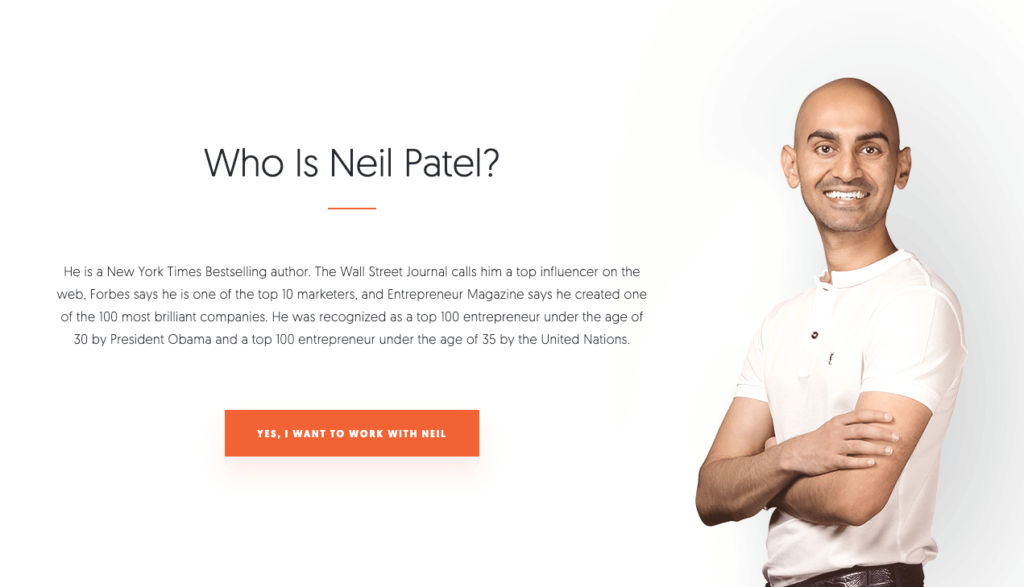
Marketing channels are the platforms you use to promote your branding; they can range from a local newspaper and transit advertisements to websites and social media accounts.
Naturally, your personal branding success relies upon choosing the marketing channels your target audience use. So, the better you are at picking them, the higher your engagement rates will be.
Fortunately, selecting the correct marketing channels isn’t a game of chance; there are systems in place to help you.
Your chosen niche will have preferred platforms. For instance, if you’re a travel photographer, then Instagram and a blog would be the right choice for promoting your brand. On the other hand, if your niche is grooming French poodles, you’d use YouTube.

Google Analytics is essential for finding your audience’s demographics. And social media platforms such as Facebook Audience Manager and Instagram Audience Insights can help you discover your audience.
Your goal isn’t to be on every platform; it’s to be successful on one platform that your audience uses most, so you own the space and become the niche authority.
Your content strategy contains the goals you want to achieve and the type of content you’ll use to achieve them. Your marketing strategy is how you’ll distribute the content.
To execute them successfully, you need to know what type of content to use and how to deliver it (for example, video, written content, or images). Fortunately, the marketing channels you’ve chosen can tell you everything you need to know.
How your platforms guide your content:
Just as specific platforms suit your niche, certain content works on your platforms—making it easier for you to create the kind of content your audience wants to see. However, each platform requires a different approach; it’s why successful brands usually use no more than 2-3 platforms.
Some platform examples:
Suppose you’ve chosen a website or a blog as your marketing platform. Your content plan would include well-written SEO content, high-quality images, and possibly video links to YouTube.
If it’s YouTube, your focus would be on producing the highest quality videos.
And with Instagram, beautiful photos, an intriguing brand story, and regular brand updates would be your approach.
Start by choosing 2 platforms, research the type of content your competitors are producing, invest in any necessary equipment (software or hardware).
Only by defining both strategies and knowing exactly what will work, where it’ll work, and how it’ll work, can you establish your brand successfully.
As with any relationship, the more you give, the more you get. This is particularly true for building a brand, as 73 percent of consumers say customer experience plays an essential role in their purchasing decisions. And a further 86% of customers say they would pay more for a better customer experience.
With personal branding, you are the product, so those statistics are vital for creating lasting relationships.
A relationship engine is a combination of the strategies you use to start and nurture those relationships. The type you choose largely depends on the marketing platforms you’re using, but all require you to do the following.
6 Steps to Building Lasting Relationships:
Ed Wallace, the author of the relationship engine, said, “Success comes from the experience we create for others.”
The long-term success of your brand depends on the relationships you build with your viewers. And remember, they can end a relationship with the click of a button, never to return. So, treat them right, and show them you care.
The perception followers have of your brand is your most valuable asset. But you’re not a mind reader, so it’s impossible to know what people think and how your brand performs without using analytical data.
And, you can’t improve what’s not being measured. It’s why you have to implement a brand measurement process to track everything you do and how your audience perceives it.
Brand metrics to track include:
Your brand awareness, its distinctiveness within your market, its reach, how your customer relationships are performing, and the volume of click-throughs and sales you’re making.
But, great news! Tools are now available to measure and analyze every important statistic, enabling you to improve every step of your branding process.
Now, last but not least:
Here’s that word “consistency” again, and it’s also the key to designing your brand; we’ll finish by telling you exactly why.
Brand consistency ensures your brand’s message, values, and image are reliable across your marketing channels. That’s crucial, as people prefer to follow and support brands they know. According to a Lucidpress report, consistent branding has seen to increase revenue by 33%.
You must live and breathe your brand personality, always be authentic, transparent, and align your content message with your designs on all your cross-channel platforms. Get those right, and people will connect with your brand and remember you.
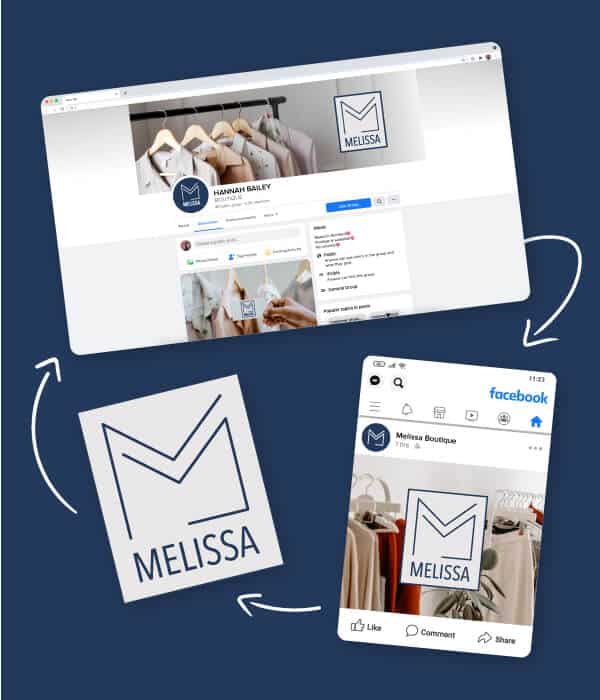
You already have the most crucial ingredient for creating a hugely successful personal brand: You.
Your next step is packaging and presenting your uniqueness in a way that your target audience will connect and engage with.
Follow our 10 steps one at a time, become the best version of yourself, give your awaiting audience what they want, and you’ll own your niche.
And remember, what you have to say is important, but it’s how you say it that matters.
The information provided on this page is for information, educational, and/or editorial purposes only. It is not intended to indicate any affiliation between Tailor Brands and any other brand or logo identified on this page.
Products
Resources
@2024 Copyright Tailor Brands